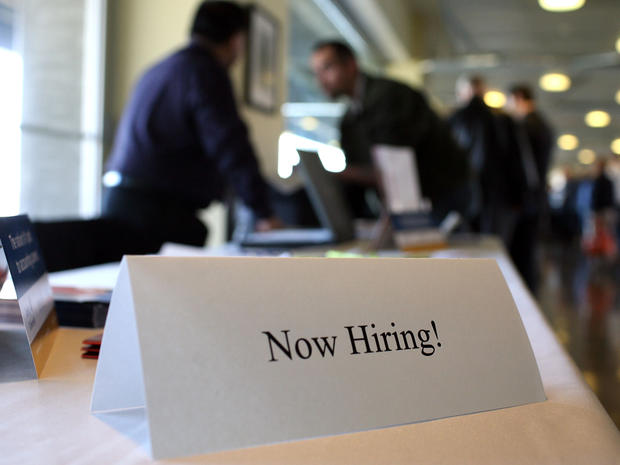The most important number in this week's job report
When the Department of Labor offers its February employment report on Friday, the figure hogging most of the attention, as usual, will be the number of jobs the economy added during the month. But there's a more important number to zero on in gauging the strength of the recovery: the monthly rise in workers' earnings.
Economists have been looking for job gains to translate into fatter paychecks, a missing ingredient during the halting rebound from the Great Recession. That's critical in a country where consumer spending accounts for roughly tw0-thirds of economic activity.
"We're still waiting to see real signs of wage growth," Chad Stone, chief economist at the Center on Budget and Policy Priorities, told CBS MoneyWatch.
Last month's payrolls report illustrated solid jobs growth, particularly in upward revisions to November and December numbers. But the January data also included a rebound in wages, which have been lackluster at best.
Hourly wages increased an average of 12 cents in January, the biggest gain since June 2007. The rise was particularly welcome as it followed a negative read in December, when wages dropped five cents.
"Perhaps we've seen an end to the wage malaise -- we're looking for some reassurance that last month's bounce was not a one-off," said Jim Russell, portfolio manager at Bahl & Gaynor.
While the December wage decline was likely nothing to worry about, forecasters are hoping to see steady, if not spectacular, wage growth, said JJ Kinahan, chief strategist at TD Ameritrade, who added that the February report could shed light on whether the December drop was an anomaly.
The January figure brought the year-on-year hourly wage gain to 2.2 percent. For the economy to start cooking, wage growth should hit 3 percent or 4 percent.
The latest job numbers take on added importance given the recent bout of wintry weather in the Northeast and other regions, a freeze economists say could hurt growth in the first three months of the year.
The employment data should help resolve if "we have reached escape velocity of economic growth," Russell said.
Most forecasters expect February nonfarm payroll gains of 230,000 to 240,000.
Analysts had varied takes on how the recovery is faring.
"We're not seeing much momentum in the U.S. economy," said Lindsey Piegza, chief economist at Sterne Agee, in offering a bleaker take on economic conditions. "We still expect positive growth of 2 to 2.5 percent. It's still positive, but hardly the 3 percent of above that many in the market and at the [Federal Reserve] have been forecasting."
Stone had a more positive view. "I don't make forecasts, but you can tell a story of momentum that will keep going," he said of recent economic reports.
Data out this week included a measure on manufacturing in February, with a gauge from the Institute for Supply Management expanding at its slowest pace in a year as weaker growth overseas curbed orders for U.S.-made products, compelling U.S. factories to slow the pace of hiring.
Other reports had consumer spending increasing 0.3 percent in January after a 0.1 percent drop in December. The January number revived hopes for some that lower gasoline prices would translate into increased consumer spending.
But "lower gas prices alone will not maintain the consumer -- that needs to come from organic job growth and income growth," said Piegza in dismissing the idea that cheaper gas will do much to lift Americans.
Figures for January also had the savings rate climbing to 5.5 percent, the highest level in more than two years, in a possible reflection of where people were putting money that came with lower gasoline prices.
The "permanent income" hypothesis developed by economist Milton Friedman in the 1950s explains why consumers have increased savings at the apparent expense of retailers.
"If you get a temporary windfall, you usually pay down debt or tuck it away. If you find a $100 bill on the street, usually you apply it to your Visa bill, but if you all of a sudden ratchet up your income or lower your expenses on a permanent basis, you spend more," said Russell. "So what this tells you is Americans don't expect low gas prices to last long."
Beyond offering an important read of the U.S. jobs market, this week's labor report could also be decisive on the timing of the Federal Reserve's first interest rate hike since 2006.
"Increasingly there's a drumbeat that the Fed's initial liftoff will be June or September. Should this number come in hot and strong, it might move that timetable more solidly to June," Russell said. "The weaker the number, the further the Fed's liftoff date gets pushed back."
An economy that is merely "muddling along justifies a patient stance by the Fed," added Piegza, who believes the central bank won't move to hike rates until the second half of 2016.
